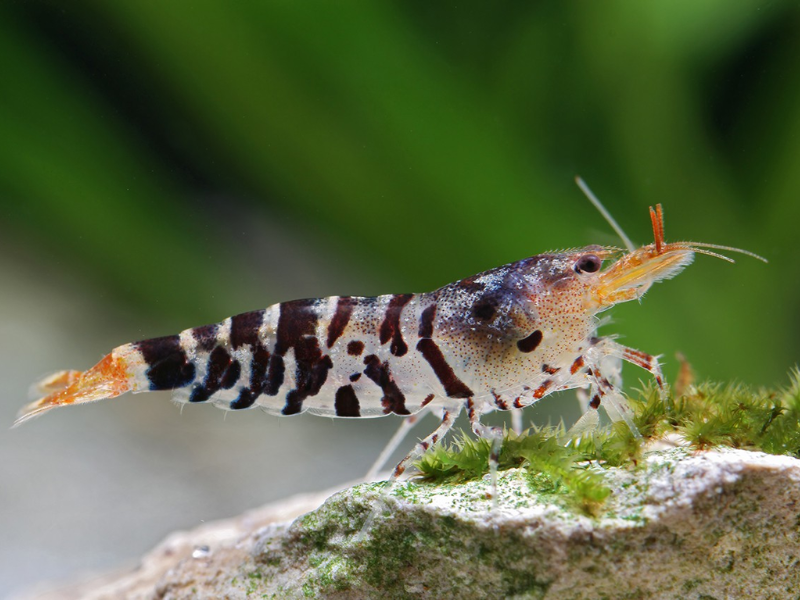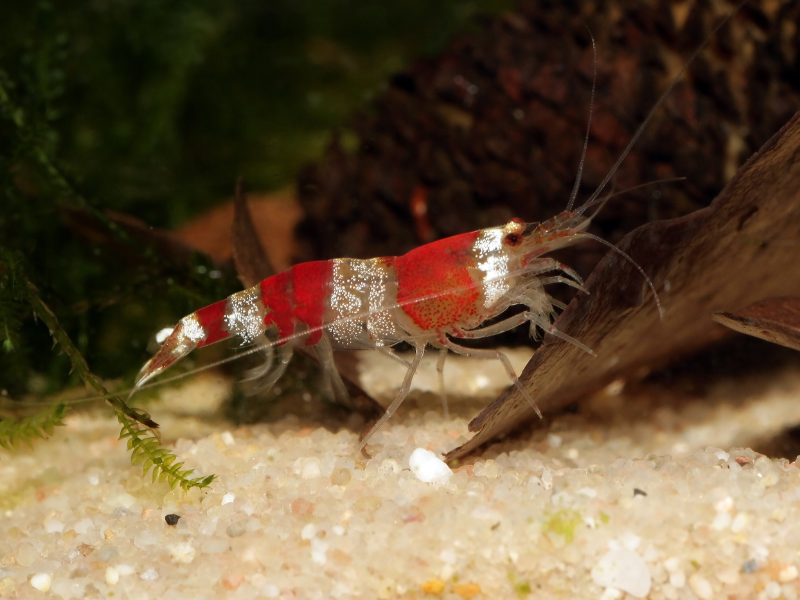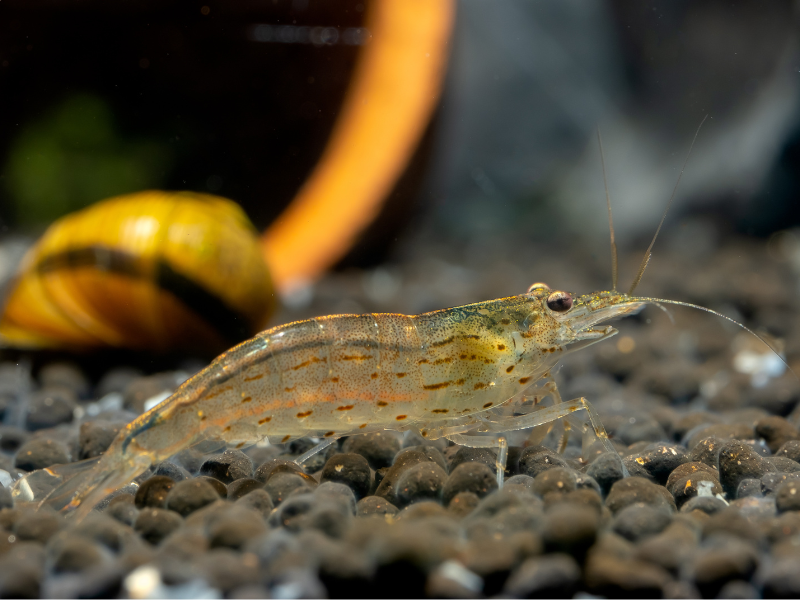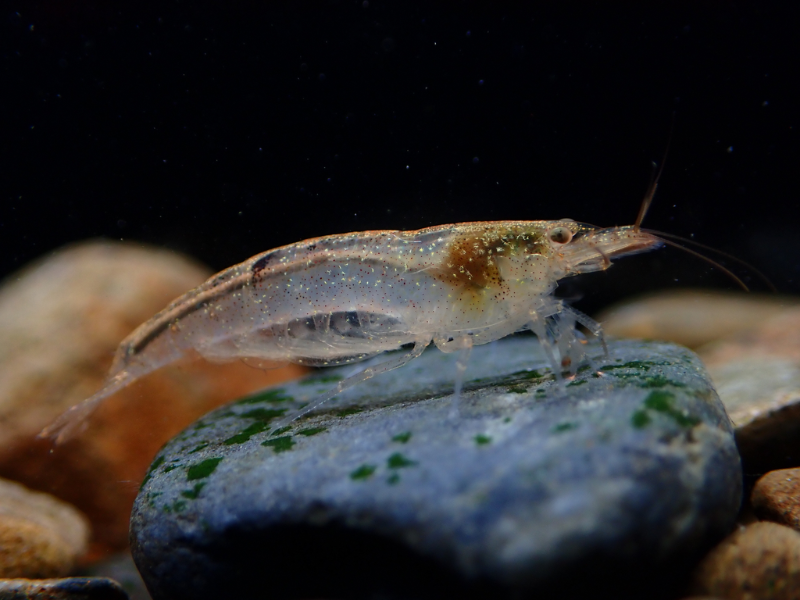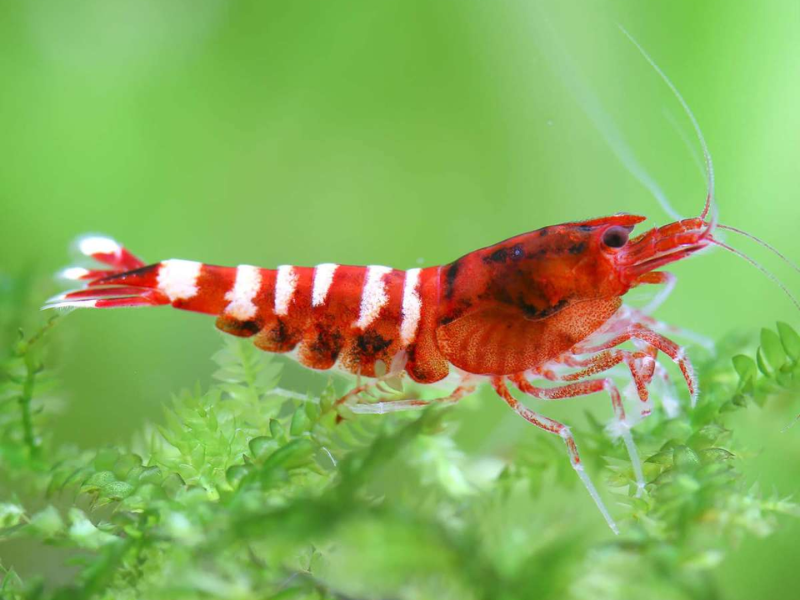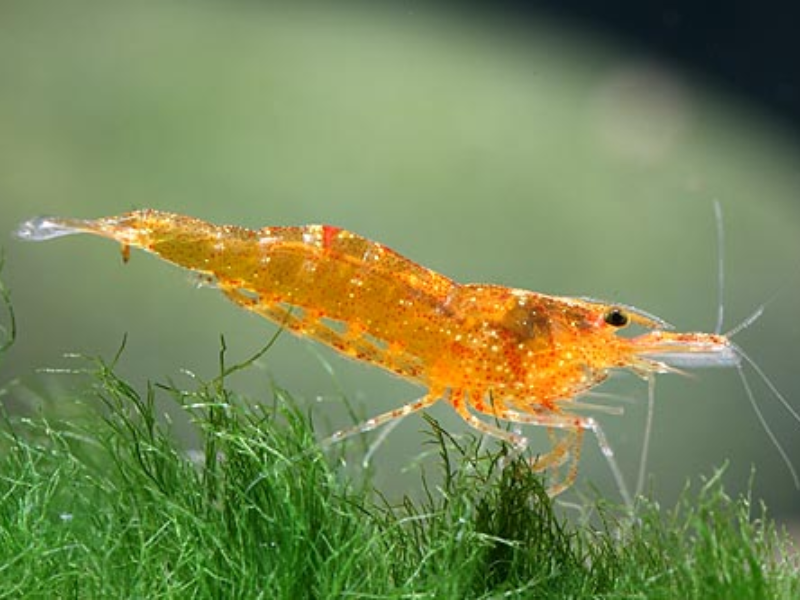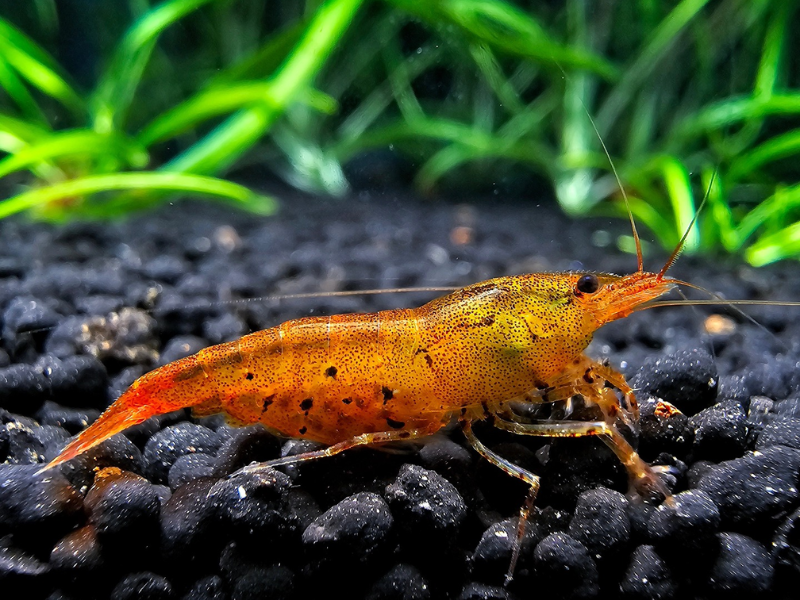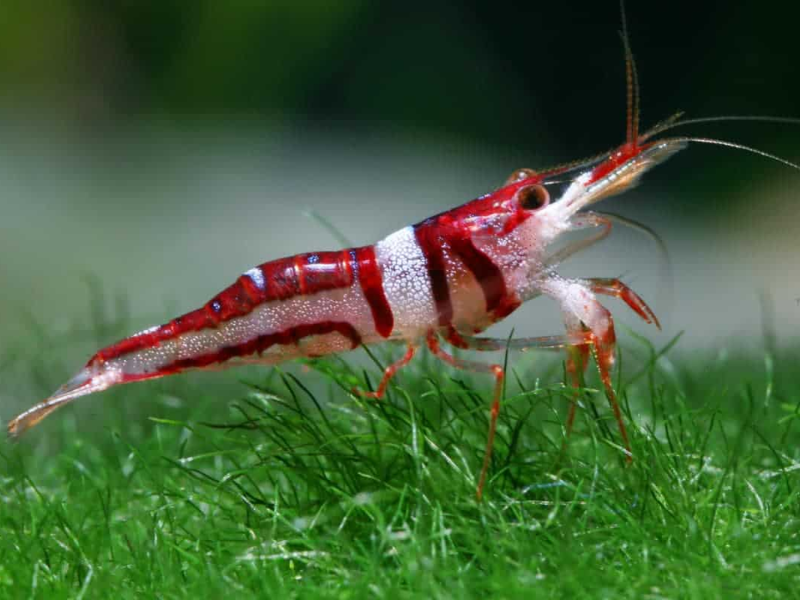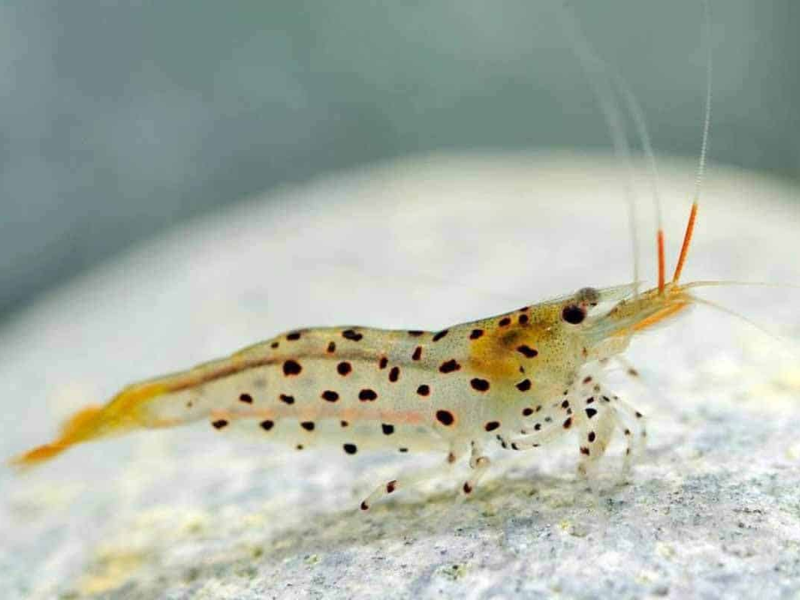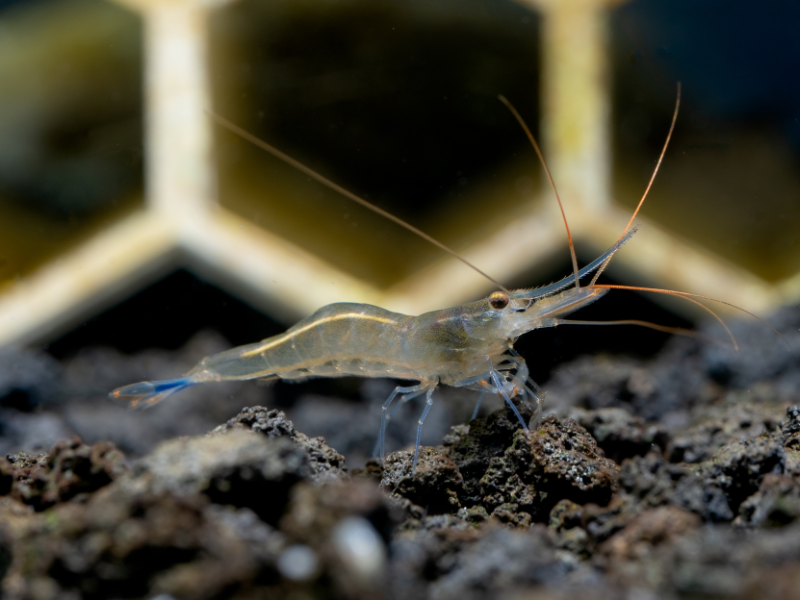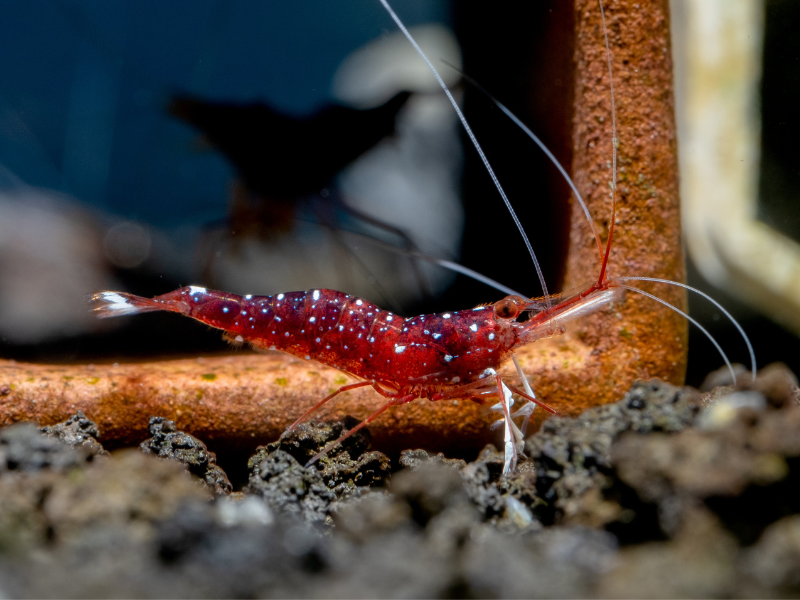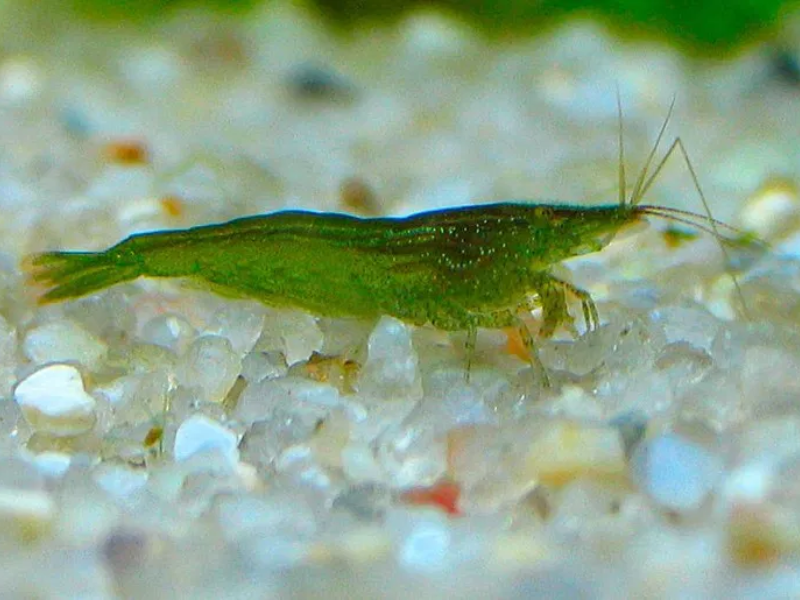Caridina gracilirostris
Pinocchio Shrimp
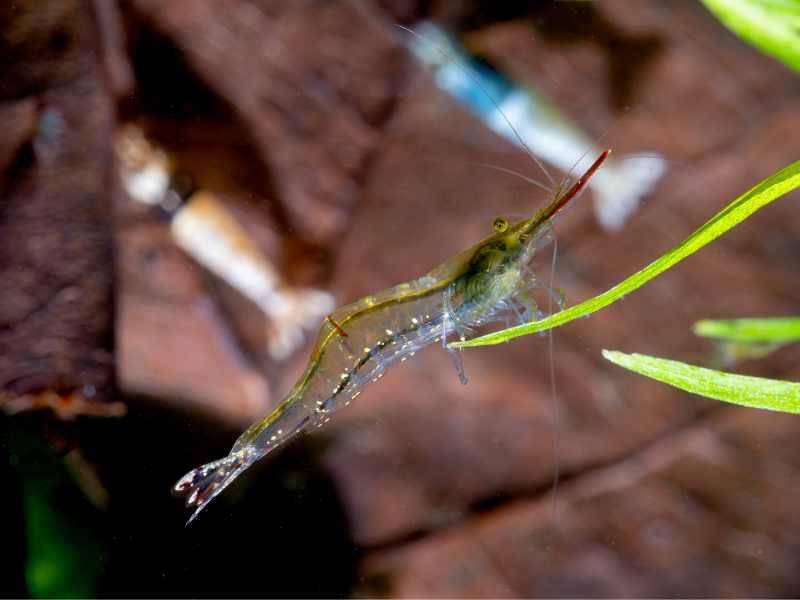
Scientific Classification
Quick Stats
Aquarium Building Information
About This Species
Basic Description
Detailed Description
The Pinocchio Shrimp, scientifically known as Caridina gracilirostris, is a fascinating invertebrate originating from the freshwater and slightly brackish estuaries of Southeast Asia. Its natural habitat informs its needs in a home aquarium, where it thrives in well-established tanks with stable water parameters and a gentle current. As an active but peaceful species, it is best housed in groups, as this encourages their natural shoaling and foraging behaviors. A group setting provides a sense of security, making them more visible and less stressed.
These shrimp are true omnivores and play a crucial role as a cleanup crew. Their diet in the wild consists of biofilm, algae, and detritus. In an aquarium, this should be supplemented with high-quality sinking pellets, algae wafers, and blanched vegetables to ensure a complete nutritional profile. While they are not picky eaters, a varied diet contributes to their overall health and vitality. Their constant foraging not only keeps them occupied but also helps to manage waste and algae buildup within the tank, contributing to a balanced ecosystem. Despite their helpful role, they produce very little waste themselves, resulting in a low impact on the tank's bioload.
Physiologically, they are known for being exceptionally fast swimmers, often darting through the water column rather than just crawling along the substrate like many other dwarf shrimp. This activity is spread across the entire tank, from the bottom to the middle levels. A notable behavioral trait is their propensity to escape. These shrimp are adept climbers and can exit a tank through even the smallest openings in a lid, especially around filters and heaters. Therefore, a tight-fitting cover is an absolute must for any keeper. With a relatively short lifespan of a couple of years, providing a pristine and stable environment is key to helping them live out their full term. Their sensitivity makes them a rewarding challenge for the aquarist who has mastered stable tank maintenance.
Scientific Description
Caridina gracilirostris is a decapod crustacean belonging to the Atyidae family, a group known for its freshwater shrimp species. Native to Southeast Asia, this species exhibits a fusiform body shape, an adaptation that facilitates its notably active swimming behavior compared to more benthic shrimp. The most prominent morphological feature is its elongated, serrated rostrum, which can be as long as or longer than its carapace and is the basis for its common names. This structure is used for defense and foraging among substrate and vegetation.
Ecologically, C. gracilirostris plays the role of a primary consumer and decomposer. In its natural habitat, it feeds extensively on biofilm, detritus, and algae, contributing significantly to nutrient cycling and the health of its ecosystem. Its low metabolic rate and corresponding low oxygen consumption allow it to inhabit a range of environments, but it remains sensitive to pollutants and sudden shifts in water chemistry. Its IUCN Red List status is categorized as Least Concern (LC), indicating that wild populations are currently stable and widespread.
This species is primarily a freshwater inhabitant but demonstrates a tolerance for low-end brackish conditions. This physiological trait is directly linked to its amphidromous reproductive cycle, where adults live and mate in freshwater, but the planktonic larvae are washed downstream into brackish estuaries to develop. This complex life cycle presents a significant challenge for captive breeding and distinguishes it from many other Caridina species that have fully adapted to a freshwater lifecycle. As a member of the phylum Arthropoda, C. gracilirostris undergoes ecdysis (molting) to grow, shedding its chitinous exoskeleton periodically. During this vulnerable time, it requires ample hiding places to avoid predation and stress.
Breeding Description
Breeding the Pinocchio Shrimp in a home aquarium is considered a significant challenge and is generally only accomplished by experienced and dedicated hobbyists. The primary difficulty lies in its complex reproductive strategy, which requires both freshwater and brackish conditions to complete its life cycle. Unlike many popular dwarf shrimp that hatch fully formed, miniature versions of the adults, this species produces free-swimming planktonic larvae.
While there are no definitive external features to easily sex young shrimp, mature females are typically larger and may display a more robust and rounded underside, known as the saddle, where eggs are stored before fertilization. To attempt breeding, it is best to start with a large group to ensure a mix of males and females. Once a female is 'berried,' meaning she is visibly carrying a clutch of fertilized eggs under her swimmerets, she should be isolated in a separate freshwater hatching tank. This prevents the delicate larvae from being consumed by other tank inhabitants upon hatching.
After the eggs hatch, the real challenge begins. The microscopic larvae must be carefully collected and transferred to a separate, mature brackish water tank for their development phase. The salinity, water quality, and food source in this rearing tank must be meticulously managed. The larvae, or zoeae, require a diet of microscopic foods, such as phytoplankton or specialized liquid fry food, until they undergo a series of molts and metamorphose into post-larval shrimp. Once they have completed their metamorphosis and resemble tiny versions of the adults, they must be slowly and carefully drip-acclimated back to freshwater over a period of several hours or days before they can be introduced to the main aquarium. This entire process is delicate and requires significant technical skill and dedication.
Generate Printable Card
Create a printable card for this creature to display in your store or aquarium. The card includes a QR code for quick access to more information.
